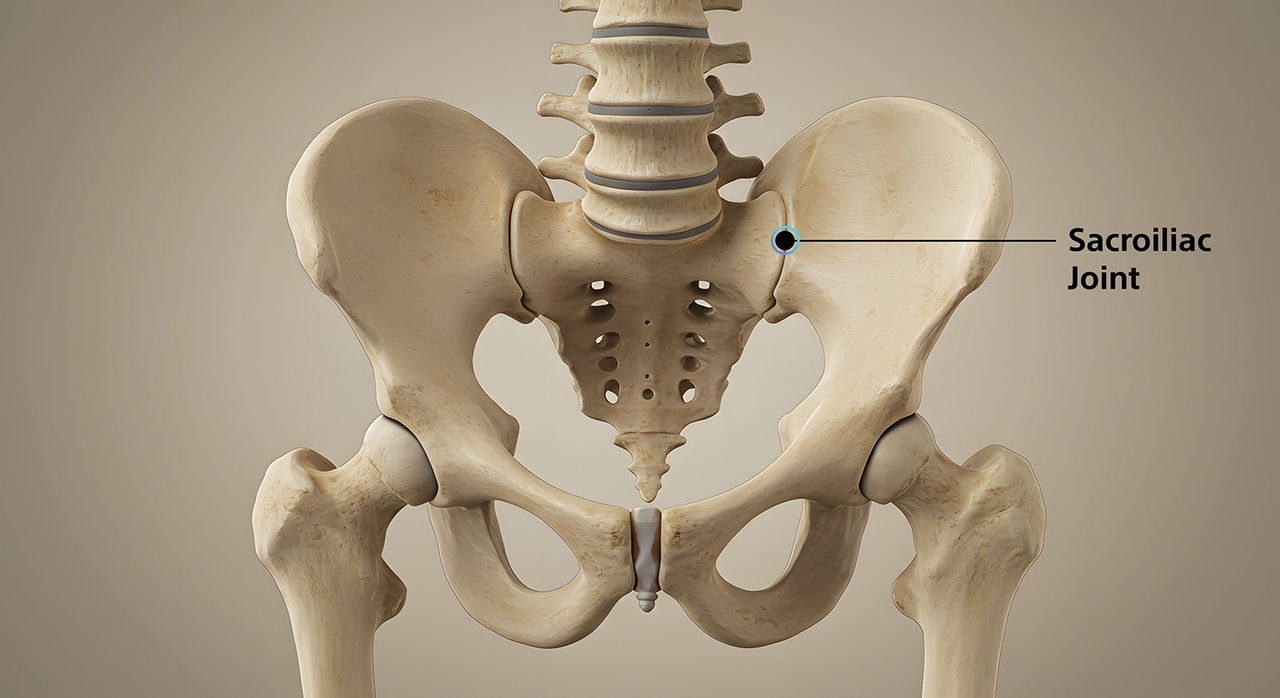
Pain in lower back, buttocks or hips
Radiating pain to the thighs or groin
Pain that worsens with activity
Stiffness in hips
Causes of sacroiliac joint dysfunction
Sudden impacts, like those from falls or car accidents, can cause uneven pressure on the SI joints, leading to misalignment or injury.
Hormones released during pregnancy can relax the ligaments, making the SI joints less stable and more prone to dysfunction and pain.
Conditions like osteoarthritis can cause wear and tear on the joint surfaces and surrounding ligaments, reducing the SI joints' ability to function properly and causing discomfort.
Repeated stress on the SI joints, such as from lifting heavy objects incorrectly, standing or sitting for long periods or intense exercise, can strain the joints over time.
Excessive joint movement may cause pain in the hip or lower back that spreads to the groin area.
Restricted joint movement may lead to pain on one side of the buttocks or lower back that spreads down the leg.
Treatment options for sacroiliac joint dysfunction
Treatment for SI joint dysfunction (SIJD) typically involves physical therapy to help restore alignment and movement and strengthen the muscles for better stability. Other treatment options include:
Lifestyle Changes
Sit, stand and walk with good posture to reduce strain on the SI joints.
Make your workspace and seating more supportive to avoid putting pressure on the joints.
Keeping a healthy weight can reduce stress on the SI joints.
Limit running or jumping to prevent worsening pain.
Opt for less strenuous activities such as swimming, cycling or walking.
Avoid sitting or standing for too long; stretch and move to reduce stiffness.
Medications
Over-the-counter medications can help reduce pain and inflammation.
Injections into the joint can relieve inflammation and pain.
These can help reduce muscle spasms around the SI joint.
Creams or gels can be applied directly to the area for localized pain relief.
Physical Therapy
Exercises to strengthen your core (abdomen, back and pelvis) improve joint support.
Strengthen the muscles around your hips and lower back to stabilize the SI joints.
Focus on stretching muscles that affect the SI joint, like the hamstrings and hips.
A therapist may use hands-on techniques to help improve joint movement.
Specific exercises can keep the pelvis steady and reduce excessive movement.
Injections and Minimally Invasive Procedures
Injections can reduce pain and inflammation in the joint.
Uses heat to target nerves around the SI joint, reducing pain.
Learn more about Radiofrequency Ablation
A device implanted near the spine sends electrical impulses to block pain signals.
Learn more about Spinal Cord Stimulation
Surgery
Surgery to fuse the joint and stabilize it may be indicated if other treatments don't work.
This material is for informational purposes only and not meant for medical diagnosis. This information does not constitute medical or legal advice, and Boston Scientific makes no representation regarding the medical benefits included in this information. Boston Scientific strongly recommends that you consult with your physician on all matters pertaining to your health.
CAUTION: The law restricts these devices to sale by or on the order of a physician. Indications, contraindications, warnings, and instructions for use can be found in the product labelling supplied with each device or at www.IFU-BSCI.com. Products shown for INFORMATION purposes only and may not be approved or for sale in certain countries. This material not intended for use in France.
